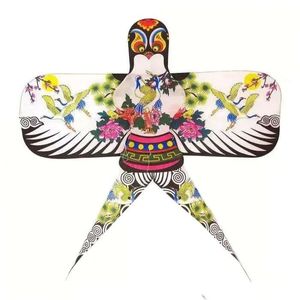
Auther:2023-04-17

Kites were invented by ancient Chinese people in the Spring and Autumn Period of the Eastern Zhou Dynasty, more than 2000 years ago. According to legend, Mo Zhai made a wooden bird out of wood and developed it for three years, which was the earliest origin of kites. Later, Lu Ban used bamboo to improve the material of Mo Zhai's kite, and it was not until Cai Lun improved papermaking in the Eastern Han Dynasty that paper was used to make kites, called paper kites.
In the Northern and Southern Dynasties, kites became a tool for transmitting information; from the Sui and Tang Dynasties, due to the development of paper making industry, folk began to use paper to frame kites; in the Song Dynasty, kite flying became a favorite outdoor activity. Zhou Mi of the Song Dynasty wrote in The Old Story of Wulin: In the Qingming Festival, people go to the countryside to fly kites and return at sunset. Iris refers to kites. In the Northern Song Dynasty, Zhang Zeduan's Qingming Shanghe Tu and Su Hanchen's Hundred Sons both have vivid scenes of kite flying.

Chinese kites have a history of more than 2,000 years. The shadow of auspicious symbols and patterns can be seen everywhere on traditional Chinese kites. During the long years, our ancestors not only created beautiful words and paintings that reflect the wisdom of Chinese people, but also created many patterns that reflect people's desire and pursuit of a better life and have auspicious meanings. Through the image of the pattern, it gives people a joyful, auspicious and blessed meaning; it integrates the appreciation habits of the masses, reflects people's kind and healthy thoughts and feelings, and permeates Chinese national traditions and folk customs, so it is widely circulated among the people and enjoyed by them.

